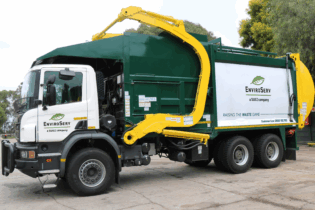The findings from a Water Research Commission (WRC) study done in partnership with the South African Local Government Association (SALGA) indicates that 44% of the studied wastewater treatment plants may have opted for less suitable (inappropriate) technologies when considering their resource base ,capacity to manage and provide effluent quality requirements, whereas 33% technology options were questionable.
Over the past decade, much attention has been devoted to the engineering, science and technological aspects of wastewater treatment in South Africa. More recently, attention has been redirected to assess the performance and compliance status of wastewater treatment facilities, and to identify the challenges and root causes that underpin poor performance – in particular by municipal institutions. When examined, it has been found that the existing systems failed due to poor maintenance, lack of skilled operators and lack of capacity, and not due to the technology itself. The study considered a national representation of municipal wastewater treatment facilities and assessed these in terms of the appropriateness of their technology choices in relation to the current ability of the municipality to implement and administer such choices. The objective of the study was to assess the consistency between the various aspects of regulation, design and management as crucial elements in sustainable technology selection and implementation. It was therefore a ‘quick and dry’ analysis of technology considerations, which allowed for a selection of 18 municipalities. Poor technology choice would be influenced by insufficient funding or fund allocation within municipalities to institute effective and adequate preventative maintenance programmes and procedures. Many municipalities seem to follow a reactive maintenance approach, whereby assets are run to failure. The lack of funding can be ascribed to a host of root causes, including low tariffs which are not cost reflective, lack of ring-fencing of the functional cost involved in wastewater treatment, inappropriate and unnecessarily expensive technology choices, billing and revenue collection difficulties. Jay Bhagwan, WRC executive manager for Water Use and Waste Management, comments: “When applying the 44% statistic to a comparative national base (consisting of 850 municipal plants), it would translate to approximately 374 plants that potentially have unsuitable technologies in place. This number is significant enough to support further investigation and measures to mitigate this as a key risk to sustainable and improved performance in the municipal wastewater services sector.” Existing works are often inadequate for the demands that are being made upon them, most often in terms of physical loading or suitable treatment processes. A combination of different factors contribute to poor performance of chosen technologies like increased service provision often via housing development (inadequate long term and integrated planning), unplanned extraneous flows allowed to enter the wastewater system thereby placing an artificial hydraulic and chemical load onto the infrastructure (lack of bylaws or implementation thereof to adequately regulate industrial effluent, stormwater ingress, potable water losses, etc.). Sophisticated wastewater systems require more maintenance, more skilled operators and a whole lot more energy and finances to operate and maintain. In many of the small towns municipalities have revenue bases that are not sufficient to cover the costs of operation and maintenance. The blind drive for achieving uniform compliance for wastewater discharge is not solving the problem in the long term, but is fuelling a problem.The study indicates that there has been a history of problems, often relating to aspects such as sewer pipe blockages, aging of the sewer infrastructure, vandalism of cables at sewer pump stations, design issues and a maintenance backlog, but that these were being addressed by the municipality.
The inception of the Department of Water Affairs wastewater services regulation programme has identified innovative approaches and appropriate technologies to ensure that sustainable choices are made by municipal decision-makers. The Green Drop incentive-based regulation initiative is excellent. However, the licensing issues are compromising the regulatory initiative and require attention. According to the project leader, Dr Marlene van der Merwe-Botha, there is a vast range of adequate technologies that are available to deliver against almost any specification set. “The competing demands for other services and infrastructure in municipalities result in an unsustainable and destabilised environment, and thus calls for regulators and decision-makers to make trade-offs. Thus, the selection needs to consider the sensitivity of the catchment and the revenue base of the municipality, the ability to attract specialists or the right skills to manage the systems” says Van der Merwe-Botha. Bhagwan adds: “The overreliance of municipalities on consultants is another big problem. Consultants have a myopic vision driven by business principles and, thus, the broader principles of society, environment and economy may not necessarily be encapsulated, which all municipalities should strive to achieve”. “Municipalities should request their advisors to provide them with a cost/benefit comparison between different wastewater technologies, with detail pertaining to each of the ‘main drivers”, says Van der Merwe-Botha. Additionally there needs to be greater scrutiny by approvers of capital funds in various departments, of the proposed technologies, on a municipality and catchment basis, the WRC study points out. Regulators need to take a holistic and strategic view of the implementation of the proposed technologies, based on the sustainability of the business of water services, and adopt design principles appropriate to the rural to small municipalities, providing leadership through their sector support and approval units.







